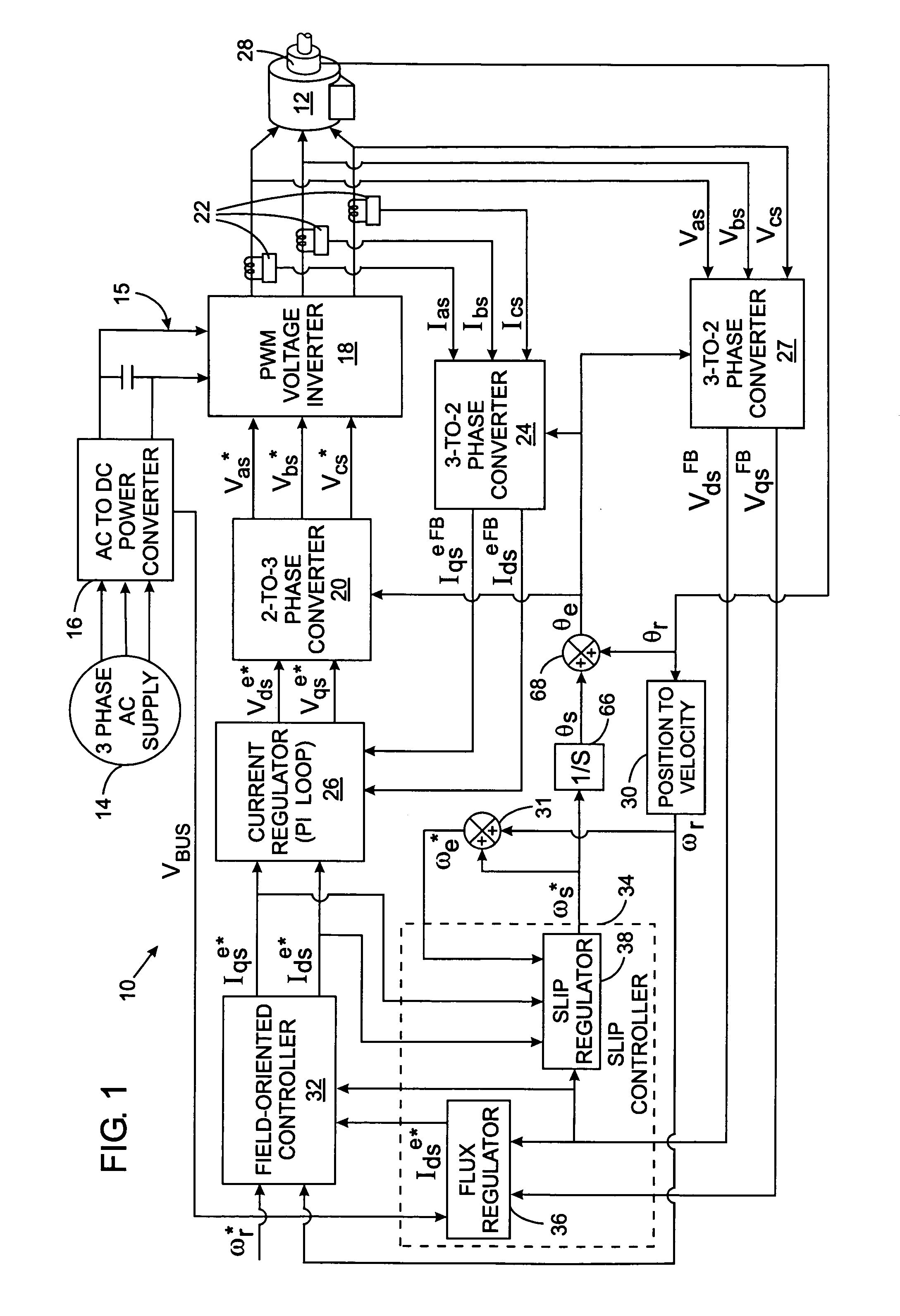Leakage inductance saturation compensation for a slip control technique of a motor drive
a technology of leakage inductance saturation and motor drive, which is applied in the direction of motor/generator/converter stopper, dynamo-electric converter control, dynamo-electric gear control, etc., can solve the problems of leakage inductance varies and the difficulty of accurate torque control over a wide torque rang
- Summary
- Abstract
- Description
- Claims
- Application Information
AI Technical Summary
Benefits of technology
Problems solved by technology
Method used
Image
Examples
Embodiment Construction
[0018]FIG. 1 illustrates a current-regulated, pulse width modulation motor controller, also called a “motor drive”, 10 for an alternating current (AC) induction motor 12. The motor drive 10 includes a power section that receives electricity from a three-phase power supply 14. The three phases are connected to an alternating current (AC) to direct current (DC) power converter 16 that rectifies the alternating currents from the power supply 14 to produce a DC voltage on a bus 15. The DC bus 15 is connected to a pulse width modulation (PWM) voltage inverter 18, which completes the power section of the motor drive 10. The AC-DC power converter 16 also produces a feedback control signal VBUS that indicates the voltage level on the DC bus 15.
[0019]The conventional PWM voltage inverter 18 includes a group of solid state switching devices which are turned on and off by control signals to convert the input DC voltage to pulses of constant magnitude on three output lines connected to the moto...
PUM
 Login to View More
Login to View More Abstract
Description
Claims
Application Information
 Login to View More
Login to View More - R&D
- Intellectual Property
- Life Sciences
- Materials
- Tech Scout
- Unparalleled Data Quality
- Higher Quality Content
- 60% Fewer Hallucinations
Browse by: Latest US Patents, China's latest patents, Technical Efficacy Thesaurus, Application Domain, Technology Topic, Popular Technical Reports.
© 2025 PatSnap. All rights reserved.Legal|Privacy policy|Modern Slavery Act Transparency Statement|Sitemap|About US| Contact US: help@patsnap.com



